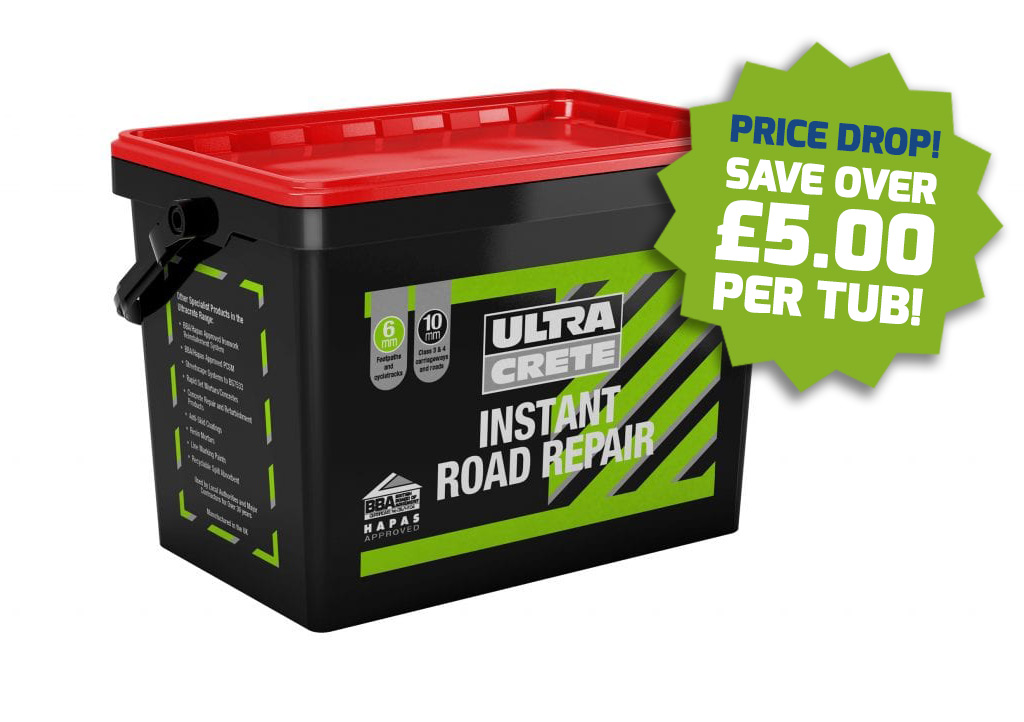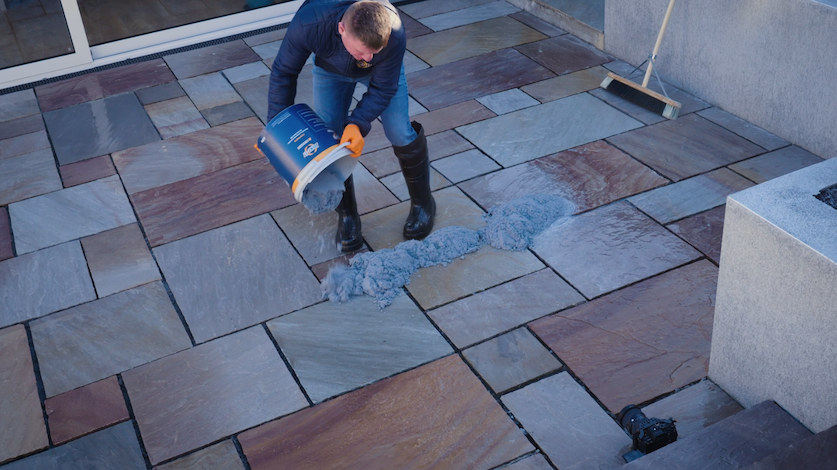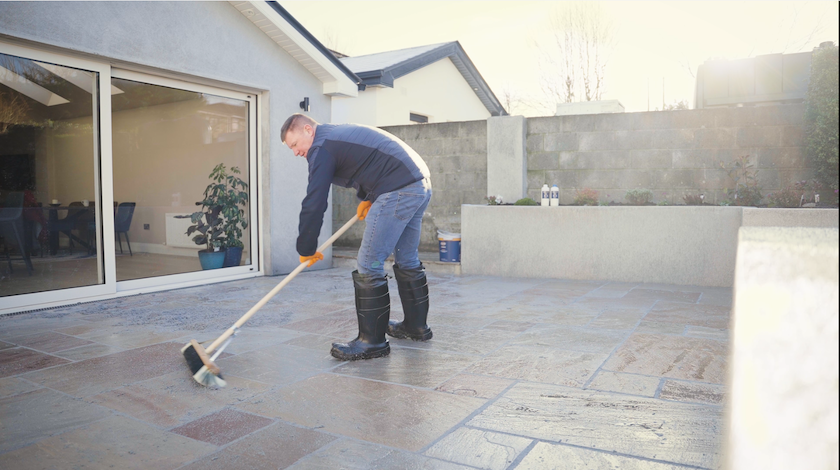Red macadam is often used as alternative coloured tarmac for certain road surfaces and domestic driveways. Find out why highway decision makers and homeowners choose red and how easy it is to lay and repair red tarmac surfaces.
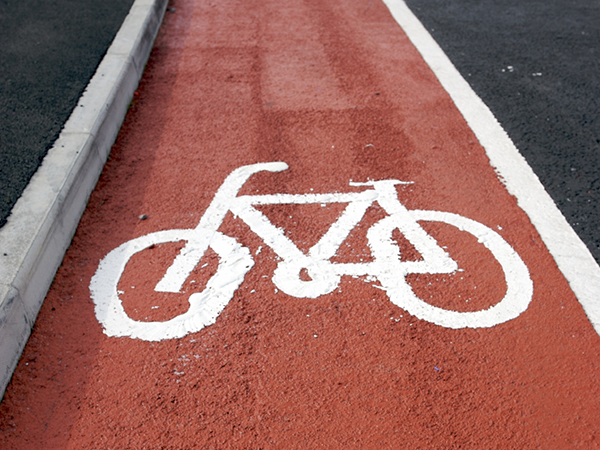
What is red tarmac and why is it used?
As the name suggests, red tarmac is purely a different colour of asphalt to the standard black variety of bitumen.
But why will you ever see red surfacing?
“The best word to describe red tarmac is ‘demarcation’,” explains Tom Hughes from Instarmac.
“A red surface is most commonly used to show bus lanes, cycle lanes or indeed particular areas of attention on a carriageway, such as intersections or potential conflict areas.”
Homeowners may also opt for red tarmac on their driveways. And red macadam is also used in car parks for traffic management and marking-out designated parking bays.
Red macadam on roads and carriageways
Generally speaking in the UK, red tarmac is applied in areas to dissuade traffic from using certain sections of the road.
You may notice red tarmac within blocks of diagonal white lines or chevrons, which separate traffic moving in opposite directions. These areas of road markings act as a more visual alert to drivers rather than a physical barrier in the form of a central reservation.
In a nutshell, red macadam is used on transport routes for:
- Traffic calming
- Road markings
- Hard shoulders on motorways and dual carriageways
- Mini roundabouts
- Bus lanes
- Cycle tracks
Tom shares that there’s not much difference between red tarmac and the standard bitumen colour. “The skid resistant value is the same. The difference is almost entirely aesthetic.
“Nonetheless, red tarmac is a key part of maintaining the UK’s roads, and we have many areas that use red surfaces for the purposes mentioned.”

How do you lay red macadam?
The process of laying red surfaces has certainly developed over the years.
“Historically, when the materials in circulation were cobblestone or granite stone, a red liquid pigment was applied like a screed on top of the surface course of choice,” explains Tom.
“But as concrete and asphalt became more prevalent surfacing materials, it made sense to offer pre-coloured asphalt instead.”
Streetworks crews source this pre-coloured tarmac from quarries. They buy it in bulk and as a hot-mastic asphalt.
Overlooking the colour, red tarmac is identical to the standard black variety and is applied by highways contractors in exactly the same way.
Can you paint tarmac red?
Wondering if you’ll get the same crimson effect from painting black tarmac?
Well, it’s certainly an option. And asphalt paints are available in alternative colours such as red and green. And even in the standard black to spruce up a faded black driveway.
However, there are surfacing specialists who say these licks of paint can impair the skid resistance value of a bitumen surface.
Especially for trafficked areas, which includes car parks and driveways, we recommend laying the exact colour of asphalt you want your finished job to be.
Does red macadam fade?
Red macadam is an incredibly durable and overall resilient asphaltic material that does not fade. It copes well with heavy traffic and will still be visually appealing in years to come.
With a similar hard-wearing formula to black tarmac, red tarmac is not prone to road faults.
But any potholes that do emerge can be easily and quickly repaired with a red road repair mix. Read on to find out how to repair red tarmac potholes.
How to repair red tarmac
Damaged red tarmac can be easily repaired with Instarmac’s Instant Road Repair Red cold-lay asphalt.
This 6mm-grade, red-coloured aggregate has been designed for permanent asphalt repairs on highways, cycle tracks, walkways, car parks and driveways. In fact, any red surfacing – including cushions, ramps and bus stops – can be repaired with this formula.
Just like the other cold-lay tarmacs from Instarmac, IRR Red is HAPAS approved, which means it has been given the seal of approval by the Highways Accreditation Product Approval Scheme.
Ready-to-use straight from the bucket, all you need to do is pour it into the reinstatement area, compact it and the area is ready for vehicle traffic.
Tom adds that the method of application and durability of IRR Red is exactly the same as the standard Instant Road Repair.
“Just as standard Instant Road Repair is a product for smaller areas and ongoing maintenance, Red Instant Road Repair is no different and is used to repair or reinstate red surfaces.”
If you’re wanting a more permanent repair (and let’s face it, who doesn’t!), we strongly recommend applying SCJ Seal and Tack Spray before pouring in the mixture.
Read our essential guide to pothole repairs for more info, which includes a step-by-step run-through of the recommended process for permanent pothole repairs.
Technical info on Red IRR
- Suitable for planned and reactive pothole repairs
- Can be used in all weathers including the wet – ideal for rainy days
- Depth: 15–100mm
- Resealable 25kg tubs (which means no waste)
- Approved for use on the London Underground and Overground
- Satisfactory for use as a PCSM in accordance with Appendix A2.4 of the New Roads and Street Works Act 1991 : Specification for the Reinstatement of Openings in Highways (SROH)
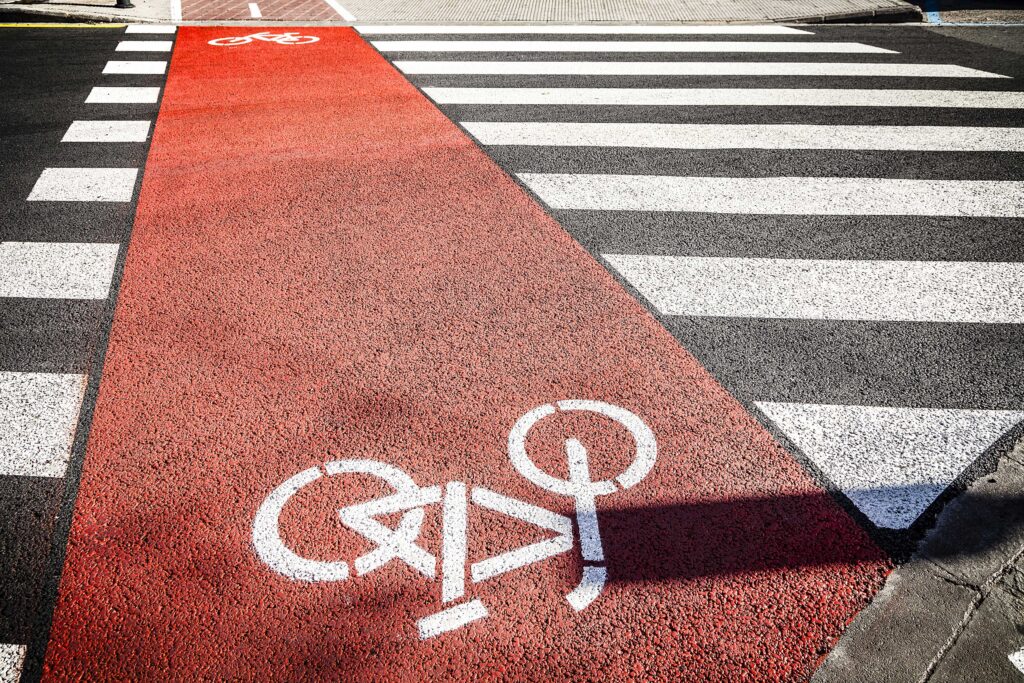
How much does red tarmac cost?
Coloured macadam, including red tarmac, is generally more expensive than standard black tarmac.
While red tarmac can be a popular choice for driveways and for traffic calming measures, you should weigh up whether the change of colour is important to the overall aesthetics of your landscaping project.
Costs of red tarmac repairs
When it comes to red tarmac repairs, the cost price of repairing potholes in red tarmac is virtually the same as a standard black tarmac repair kit.
For example, a 25kg tub of cold-lay tarmac in red costs not even £1 more than the same-sized tub of black cold-lay tarmac.
With The Paving Experts, one 25kg tub of IRR Red costs just £20.58.
And if you buy now there is currently a special offer on red tarmac where you can save over £5 per tub!
Our bulk savings include:
- Buy 10 and pay just £19.98 each
- Buy 26 and pay just £19.49 each
- Buy 52 and pay just £18.49 each
Prices exclude VAT.
Other colour options available
Tarmac is often available in an array of colours.
In fact, some suppliers offer hard landscapers more choice than you can shake a stick at, with almost every colour of the rainbow as an option.
These colours include (but are not limited to):
- Classic red
- Classic green
- White
- Blue
- Grey (light, mid and dark)
- Buff and light buff
- Terracotta
- Glow in the dark options
Who makes red tarmac?
While the team at Instarmac are hot on offering permanent pothole repair mixes, if you’re starting out and looking to lay red tarmac then contact your local quarry to see if they offer a pre-coloured asphalt.
You can also source red tarmac from these suppliers:
Tarmac offers a diverse range of colours that bring driveways, outdoor spaces and traffic routes to life. They even have an asphalt system that is glow-in-the-dark!
Natratex offers eight distinct colour options for their coloured asphalt, including red and terracotta.
When laying a coloured tarmac, we recommend planning ahead and considering how any emerging potholes will be repaired in the future.
“Just as standard Instant Road Repair is a product for smaller areas and ongoing maintenance, Red Instant Road Repair is no different and is used to repair or reinstate red surfaces.”
Tom Hughes, Instarmac Tweet
How to prepare a pothole for reinstatement
Want to know how to prepare and fill your pothole? Follow these eight simple steps:
- Clear the area of dirt and debris
- Cut a neat, vertical ‘picture frame’ around the pothole using a circular saw
- Remove loose tarmac from the hole
- Seal the edges with a cold jointing spray
- Pour your pothole repair into the hole and tamp down
- For larger holes, spray more cold joint spray into the hole, and add an additional layer of pothole repair
- Thoroughly tamp down your final surface course
- Once fully compacted, the pothole can be driven or walked over immediately (with IRR and other pothole repair formulas)
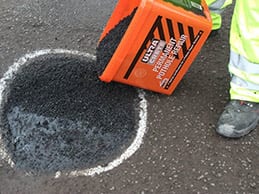
Share your insights on coloured tarmac
Have you used red tarmac before? We’d love to hear your insights about applying this crimson bitumen to driveways, paths or road markings on highways. Add your comments below.
If you’d like to find out more about repairing potholes with either cold-lay tarmac or hot-lay asphalt, get in touch with our team of experts on 0330 122 1025. Our lines are open weekdays from 8.30am to 5.30pm.

Review of 3 Epoxy Grouts for Permeable Driveways
Looking to redo your driveway? Choosing a super-strong epoxy grout can withstand heavy loads without cracking or breaking. Explore three robust epoxy grouts for driveways and discover why permeable surfaces are a must for projects such as these.

Which is the best grout for a patio?
Creating or revamping a patio or paved area? Deciding on which grout to use is just as important as choosing the paving stones themselves. This no-nonsense guide to patio grouts reviews all the pointing options so you can decide on the best one for your project.
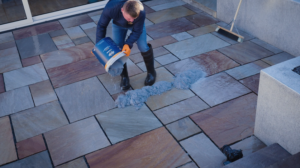
How to Apply Patio Resin Grout: A DIY Guide
Should I use an epoxy grout? Patio resin grouts are incredibly strong, highly resistant to stains & withstand up to 10 tonnes. Explore the easy-to-follow installation tips.
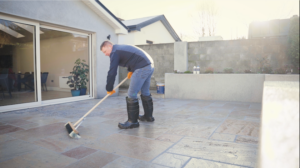
The 5 Benefits of Resin Grouting with Joint-It Dynamic
Explore the perks of resin grouting with Joint-It Dynamic & how this robust patio grout can save your paving business money. Includes expert installation tips.
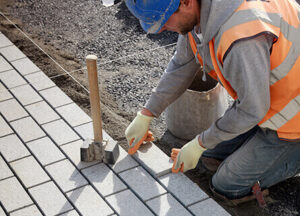
How to Lay a Patio
Paving for the first time? The foundational work is crucial to avoid future problems. Follow these 8 essential steps on how to lay a patio like a professional.
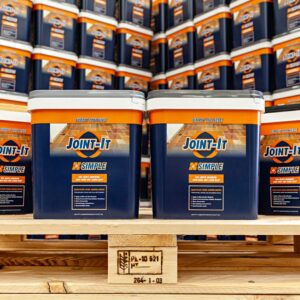
The Essential Guide to Joint-It Simple Patio Grout
All the ins and outs of Joint-It Simple Patio Grout. Find out whether to pre-seal plus the easy 4-step process for installing this 100% permeable & reliably durable grout.

